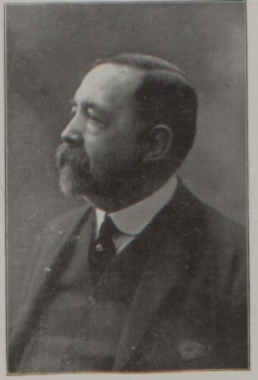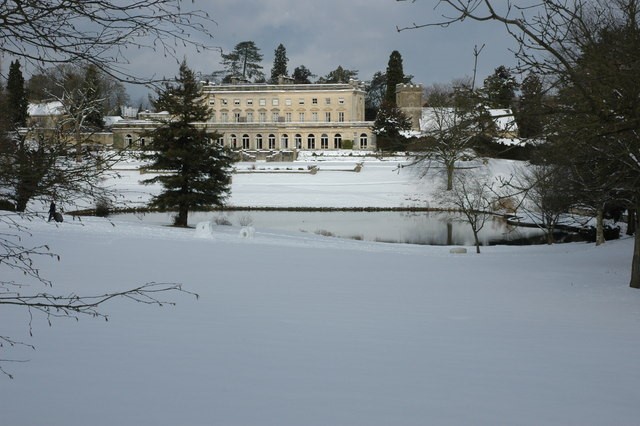GERALD NOLEKIN HORLICK
Major, Yeomanry, Royal Gloucestershire Hussars
Died at Alexandria, Egypt, 5 July 1918, of malarial fever, aged 30.
Buried at Hadra Military Cemetery, Alexandria, Egypt. Plot B, Grave 67
Gerald Nolekin Horlick — as an officer in 1914, and later
Gerald Nolekin Horlick was 30 years old when he died at the Military Hospital in Alexandria of malaria contracted while on active service. It was 5 July 1918, but, having been army personnel since 1907, he probably saw service for almost the whole duration of the war. He was awarded the 1914-15 Star medal on 20 April 1915, and was mentioned in dispatches on 13 July and 10 October 1916, and 3 April 1918. The Star and Victory medals were posthumously granted to his father 'in respect of his late son'.
Horlick appears on the Forest Row Memorial by chance really, as his father had bought Kidbrooke Park from Lewes Pendarves Kekewich in 1916, and sold it to Ronald Hambro in 1921, so the family's connection with the area was a relatively short one. In fact, Gerald was born in Brooklyn, New York, USA, on 1 February 1888, although he was baptised three years later, when the family was living at Barnes, at his father's old parish church at Ruardean in Gloucestershire. He was the third and youngest son of Sir James and Lady Horlick (née Burford, married in 1873 at St James Westminster). His two siblings were also born in the United States, Ernest in Wisconsin in around 1880 and James in Brooklyn in 1885, although he was brought back to England for baptism at Ruardean.
James junior's baptism in 1885 gives the family's abode as Brooklyn, but Gerald's says Barnes, so the family must have returned to England permanently between 1888 and 91. The 1891 census shows them at 6, Woodlands Road, Barnes, with father James, born in Ruardean, Gloucestershire, a manufacturing chemist, and mother Margaret, born in Leicester. Along with the three boys are Margaret's widowed mother and unmarried sister, and also a general servant and a nurse. James' pharmaceutical talents, with the help of his brother, developed the drink which bears his name, which was:
carefully developed...to be a complete nourishment formula for infants and invalids.
A 'concentrated and easily digestible' product, it was apparently widely praised. Moving to America after his marriage, James launched J & W Horlicks in Chicago with his brother, but then moved to Wisconsin before making his home in New York.

Sir James Horlick
The Horlick home in Barnes may well have been part of the Limes Field Estate, where, according to the Cheltenham Looker On of 27 June 1914, he had built:
quite a small township of shops, houses, maisonettes and flats
to which he gave street names associated with Cowley Manor, acquired in 1895. It seems likely that he spent a further period of time in the States, as he doesn't appear in the 1901 census and his wife was living in Westminster - in Albert Hall Mansions - with son James and a clutch of servants. This idea is borne out by his appearance on an incoming passenger list in 1904. Gerald, though, was away at school by this time, at Stoke House School in Stoke Poges in Buckinghamshire. 22 Albert Hall Mansions was occupied in 1911 by James junior - a commissioned officer and Lieutenant in the British Army, his wife, and Gerald, who gave his occupation as food manufacturer, presumably working for his father's firm. Once again, there are a number of servants.
James senior, still describing himself as a manufacturing chemist, was settled at Cowley Manor in Gloucestershire, with his wife, two American-born grandchildren, probably belonging to Ernest, and 16 domestic servants. For a saddler's son, he had done well!

Cowley Manor
Having completed prep school, Gerald moved on to Eton, where he obtained house colours for football and twice won bantam and light-weight boxing competitions. He then studied at Brasenose College, Oxford, before taking employment as Assistant Works Manager at the Horlick's family business at Slough. In March 1907 he and his brother James joined the Gloucestershire Yeomanry as supernumerary lieutenants and he was gazetted 2nd Lieutenant on 1 April 1908. On 23 July 1912 he became 1st Lieutenant; on 12 July 1916 he made Captain - maybe as a result of the activities mentioned in dispatches, or maybe the promotion galvanised him into higher action. On 9 January 1917 he was made a major. He had been at Gallipoli from April 1915 and was then sent to Egypt and Palestine in May 1916. Here he was the commanding officer of the Cavalry Machine Gun Corps.
Beyond the army and workplace, he took his role as the son of a country gentleman. In February 1909, the Cheltenham Chronicle recorded he celebrations for his coming of age:
The festivities...were attended by 121 employees and tenants on the Cowley Manor estate, to whom had been given a sumptuous supper... Subsequently Mr Hitch... [made] a presentation of a silver cup to Mr Gerald Horlick...inscribed: "Presented to Mr Gerald Nolekin Horlick , on his 21st birthday by the tenants and employees".
Ironically, this presentation ended with Mr Hitch hoping that:
Mr Gerald would live long and make as good a gentleman as his father was.
The servants presented him with a silver ink stand, and all sang, For he's a jolly good fellow, before Gerald made a gracious speech of thanks. The rest of the evening was devoted to entertainment - vocal and instrumental music, comedy acts and ventriloquism.
Although panegyrics on the war dead are frequently fulsome, Gerald Nolekin Horlick seems to have been as popular with his fellow officers as he was with the Cowley tenants. One wrote:
He was not only respected by all as a Commanding Officer, but also loved as a friend by everybody; we all feel that his place will never be filled. It seems hard that he should die this way after having gone through so many battles unhurt. It was devotion to duty that made him remain with his squadron in the Jordan Valley when he was not really fit to do so. He has done extraordinary good work during the war and will be a great loss to the army.
Another wrote:
Dear old Jerry was always the cheeriest man of the party, in spite of all sorts and manners of discomforts and dirt and general beastliness. His death will make a very marked difference to the brigade. All officers loved him and his men were devoted to him.
At some point prior to his death, although he never married, Gerald set up home for himself at 2, Carlton House Terrace, as this was given as his address in the National Probate Calendar. Probate was granted to his sister-in-law Flora, wife of his brother James. The estate was worth nearly £3,300.

Cowley Memorial
His parents clearly wanted their son remembered as widely as possible. As well as in the Forest Row Memorial Book and Forest Row Memorial, Gerald Horlick's name appears at Cowley, where his parents' main home was. He was also commemorated at Gloucester Cathedral, where his father paid for the reconstruction of the organ in memory of his son. A solemn ceremony was held in November 1920 in which Sir James addressed the Dean as follows:
On behalf of Lady Horlick and myself I ask you to receive this reconstructed organ as a memorial of our dear son.
After his parents' deaths, a bronze tablet commemorating them was put up in another Gloustershire church, Elkstone, with the addition of the following words:
and of their youngest son Gerald Nolekin Horlick, Major, R.G.R.Y., who gave his life for his country...
His surviving brothers paid for this and a new treble bell to be added to the existing peal.
Gerald's brother James was in the Coldstream Guards during World War I, was mentioned in dispatches four times, and amongst other decorations, received the Military Cross. He survived conflict, but his son, also named Gerald, was lost with the submarine H.M. Thunderbolt in 1943. When the father erected a memorial to his son, he didn't forget the brother who was a namesake.

Horlick Memorial St Mary's Slough, Buckinghamshire
Pam Griffiths
31 January 2018



